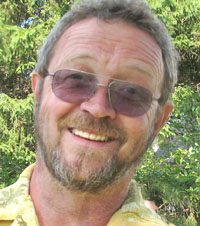There are too many cars out there. Grumble, grumble. I can’t get to the tire store, or the canned-goods outlet, or the movie theater without having to fall in line with a string of cars. Then there is no parking. It used to be only during rush hour that local traffic was jammed. Now it’s all the time.
When I look out from my truck in Bay Area traffic and see six lanes jammed ahead of me, and six lanes jammed in the opposite direction, and four lanes of off ramps jammed down to the surface streets that are always jammed because all our cities are based on four-way intersections every single block with eight directions trying to crisscross, I pity the driverless car that has to navigate this mass mess.
Traffic is bad all over the world, but the Bay Area certainly gets its share. Every year over 45 million vehicles cross the Bay Bridge, and over 41 million cross the Golden Gate. Every day over 431 thousand commuters and 69 thousand tourists visit San Francisco. A fair number of those folks are driving in from or by Benicia, so get in line.
In California we spend 29.6 billion hours commuting. A lot of that is attributed to the ease, comfort, and convenience of driving a personal car to work. Our automobiles have allowed us to live further and further away from the big cities where we are often employed. People will ride in groups if it’s easy, comfortable, convenient, or essential for survival, but they generally prefer to travel alone.
Imagine when we have driverless cars. We will be able to do office work on the road. We can have our laptop out, a stack of spreadsheets, set up a conference call, make coffee, and watch the stock market on television. We can live even further away from our jobs.
Globally there are 947 million personal vehicles and 335 million commercial vehicles currently registered. That is over a billion. Of those, only 1.2 million are battery electric vehicles. We need to step up our game against congestion on the highways as well as in our lungs.
Even though many Americans are conditioned to prefer large vehicles, the global trend in transportation is to go small, very small. Check out the i-Road by Toyota. It’s a three-wheeled solution to urban mobility. A skinny car that leans, the i-Road can travel 30 miles at 30 mph on a single charge. These travel toys might not solve the highway congestion, but cities would run smoother.
Ford is also helping the Bay Area urban commuter with their GoBike program. Ford provides 7,000 share bikes and supports 540 share stations in five cities. For people on limited income a GoBike card is only $5 for the first year, then $5 a month after that.
While researching, I also came across Gita, an electric cart that carries 44 pounds locked, and follows you around. It’s a sweet little invention with a possible future. It doesn’t solve any traffic problems directly, but it might make more people willing to walk to the grocery store if they don’t have to carry the heavy bags back home.
Living inside the big city might free one of highway commute traffic, but one will still be surrounded by cars taking up space, driving by and parking, horns blaring, sirens wailing. TED talkers say 30-percent of urban traffic is people looking for parking. On average city dwellers own fewer cars than commuters, yet they must give up 100-percent of their streets to vehicles.
Modern cities are being built or retro-fitted to create more pedestrian-only streets adorned with foliage and small shops that connect to other pedestrian-only green areas around water, pastures, and blue skies. L.A. has a $400 billion budget for transportation, with no money ear-marked for new highways.
Suburbia, that great post-war concept of the 1950s, displaced a lot of people outside the city limits. They were lured by the good life. Come where air is clear and children play in the grass. At first it worked. Many suburbs had light rail to transport locals to and from their jobs in the city cheaply and communally. Of course, big oil and big car didn’t like that mode of transportation and over the years pushed and lobbied to have the rails torn up and everyone placed comfortably in their own personal automobiles. Now suburbanites must wrestle with commute time, commute cost, vehicle expense, commuter options, and other headaches that were not in the original ad.
There are too many cars out there. Something has got to be done. The problem of traffic brings with it the time it takes to solve it. Our society is advanced in so many ways, yet those most capable of tackling this problem, those scientists, engineers, architects, movers and shakers, those think-tank specialists are sitting out there in their cars in traffic for a third of their work days, yet they can’t come up with a solution to a problem that surrounds them. What are they doing with all that free time?
Steve Gibbs is a retired Benicia High School teacher who has written a column for The Herald since 1985.







I feel you pain. Here in the big City of Kersey I wanted to go to MJ’s. for my powerball tickets and had to wait until fifteen cars went past before I could pull out of my driveway. Even the cows across the road from me were mooing in sympathy for my wait.